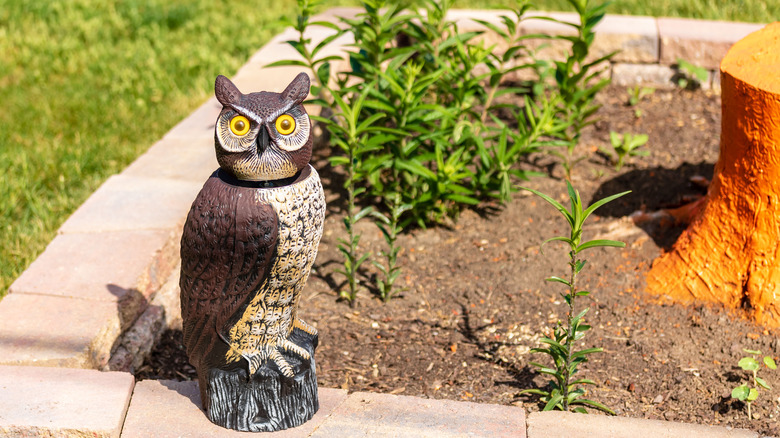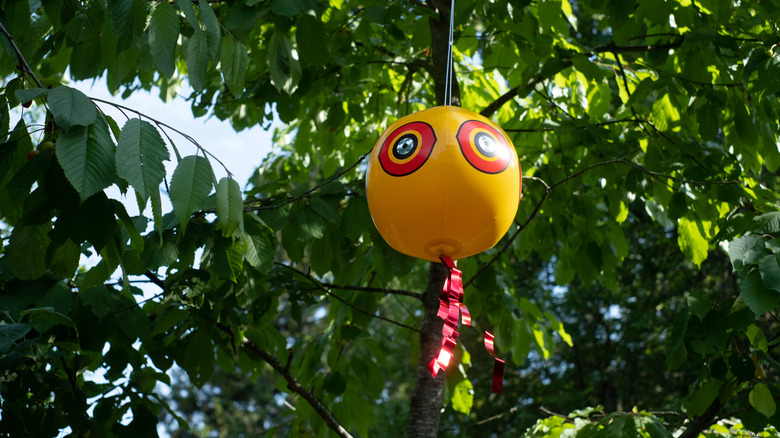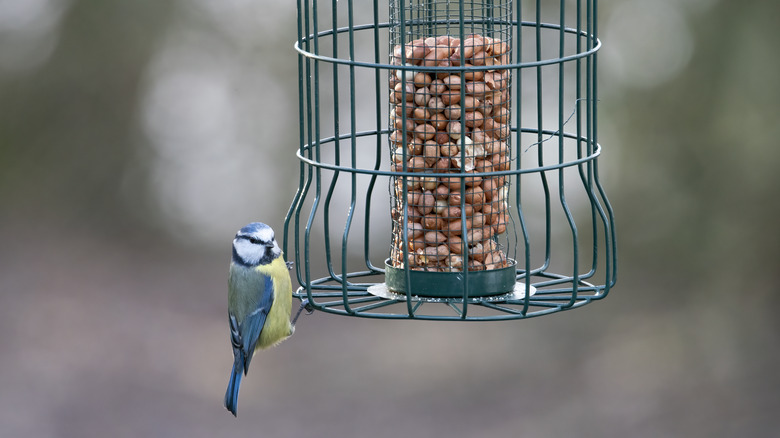Are Pest Decoys An Effective Tool To Scare Away Birds?
From hanging hummingbird feeders to providing baths where our feathered friends can frolic in the summer heat, most of the time birds are a welcome element to a relaxing porch or backyard. They even eat garden pests like slugs and caterpillars. There are times, though, when they can become a major nuisance. If you've ever had nesting barn swallows making a real mess near your front door or blue jays pecking away at your vegetable garden, you've probably thought about buying a fake owl or snake to deter them. Will that even work? The answer is yes, and then no.
Things like decoy owls and rubber snakes do make an impact initially. Since most of them just sit still, though, birds are usually smart enough to figure out they're fake as time passes. You might even walk out to find a bird sitting on your owl decoy's head! Luckily, there are some other methods that can have better results over the long haul.
Make sure your deterrents move
If you really want to get sophisticated, the most modern decoys dangle on a wire or spin while emitting sounds that scare away many types of birds. These come in owl and eagle versions, and some even look like stuffed cats. The added motion can work better than simple stationary decoys, though they usually cost two to three times as much.
If you're not really into decoys, one of the tried-and-true bird hazing methods is called an eyespot balloon. These blow-up balls have holographic eyes that trick birds into thinking they're following them. Dangle them from trees to blow in the breeze in areas where you want to deter birds. A side benefit is that you can often find a multi-pack of these blow-up balls for less than a single stationary owl decoy. You can try other inflatables like mylar balloons as well, but be sure to move them around occasionally for the greatest impact.
Alternative methods to deter and distract pesky birds
Believe it or not, you can use a soaker-style water gun or a spray nozzle on your garden hose to scare away birds while they're trying to nest. You'll have to pay attention and catch them in the act — and then squirt them just enough to frighten them away. It may take a bit of persistence, but they will take the hint and nest elsewhere after a few squirts. This tactic doesn't harm them and, in some instances, it saves their babies. Take the dove doing construction in your rain gutter as an example — her nest and eggs will be washed away during the first downpour if you don't encourage her to build elsewhere.
Another suggestion for keeping birds out of your veggies is to offer them tasty morsels they enjoy just as much (or more!). For example, keep the jays out your of your peas, lettuce, and cabbage by putting sunflower seeds or peanuts in squirrel-proof bird feeders elsewhere on your property. Then you can actually enjoy watching them eat instead of cursing them for ruining your garden.


